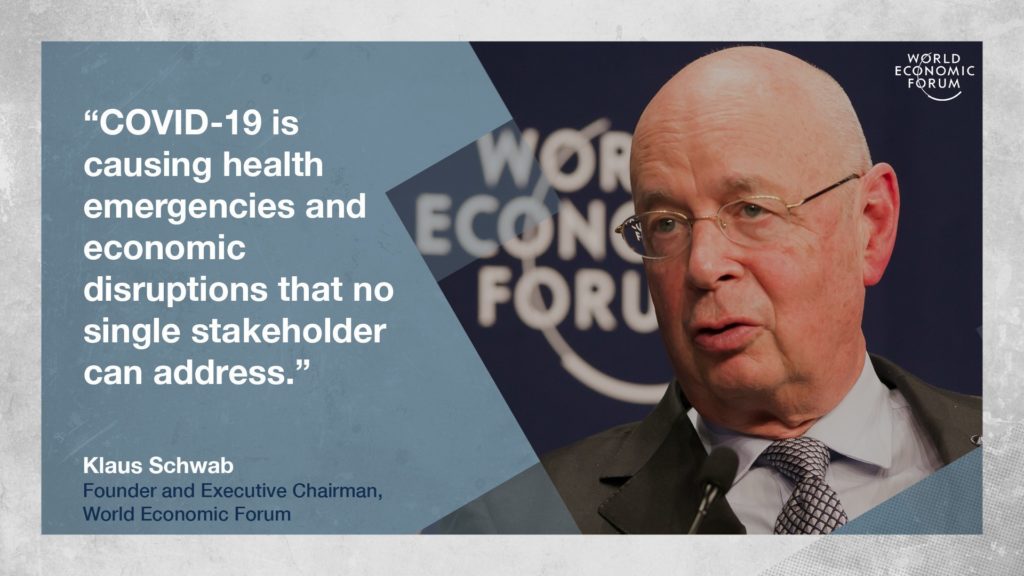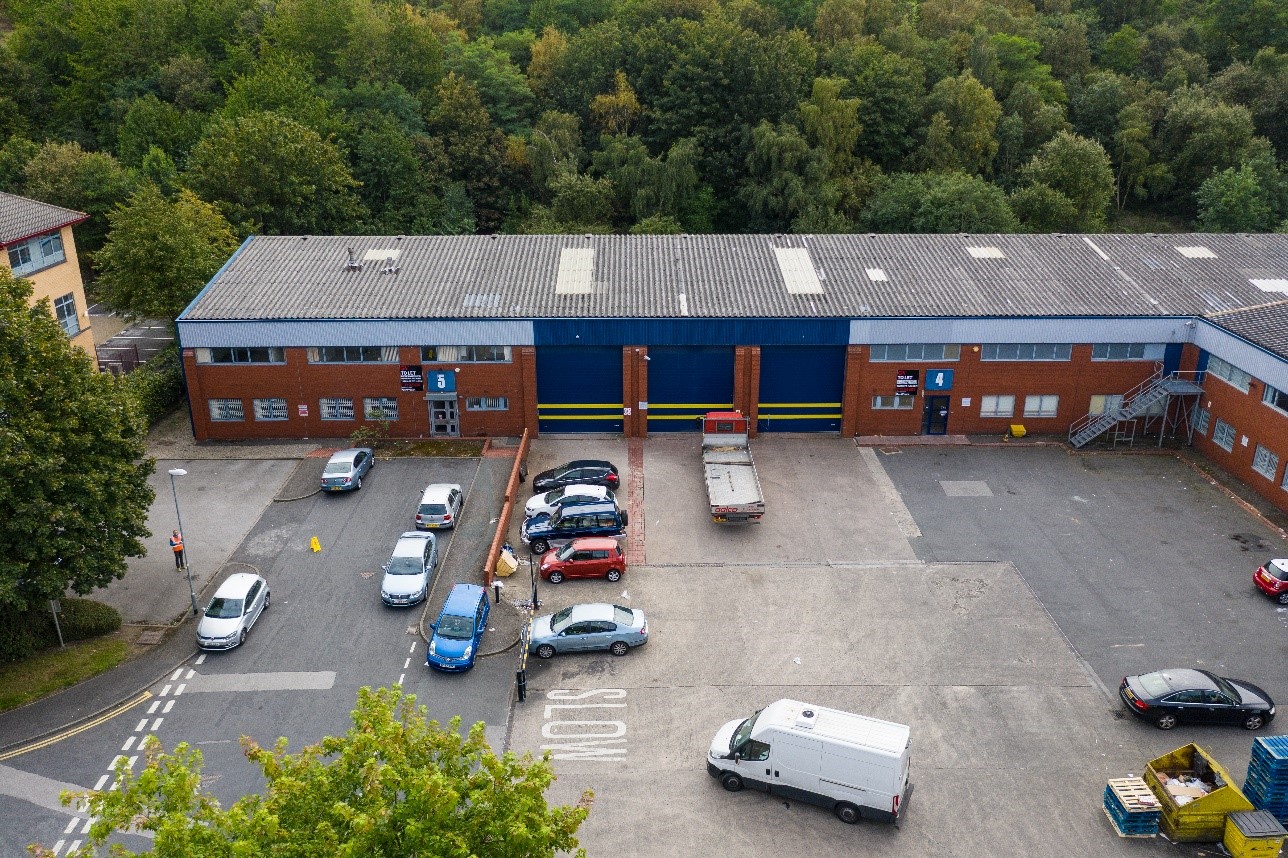
Brexit news
Little progress has been made in recent months. Presently, there remains a few key sticking points between the protagonists, such as European access to the UK’s fishing waters and ensuring a level playing field is maintained. But given the UK’s threat to walk away from talks if no progress was visible by the end of June, the fact that discussions are still ongoing can only be regarded as encouraging.
Businesses on both sides of the Channel have been preparing for a ‘no deal’ outcome for some time and such preparations have been rendered even more complex given the equally pressing Covid related matters that are currently taking much of their attention.
Meanwhile, Michel Barnier, the EU’s chief Brexit negotiator, has issued a dossier of preparations EU businesses and citizens need to make before the end of the year. The report advises all businesses to revisit the existing plans for a ‘no deal’ Brexit.
It has to repeated that the risks surrounding economic forecasts – predominantly on the downside -are particularly heightened at present, both on account of Brexit and Covid related matters. The threat of a ‘second wave’ of infections, or even a resumption of greater lockdown measures renders any forecasting extremely challenging.
Global economy
We closed our commentary of the global economy three months ago with the comments of the head of the IMF, Kristalina Georgieva, that her organisation’s then forecasts may well be “too optimistic”. That certainly was so, with the latest forecasts for this year and next being cut virtually across the board.
Forecasts for global growth have been cut from the -3.0% expected in April 2020 to -4.9% now while next year’s growth has been reduced from 5.8% to 5.4%. These reductions are the result of a greater than expected hit to activity over the first half of 2020 and a slower path of recovery.
It is sobering to realise that cumulative global growth over 2020 and 2021 together is now forecast to be over six percentage points worse than forecasts made six months ago, before the coronavirus took hold. For all bar a few countries, first quarter growth was generally poorer than expected while flash data point to a more severe contraction in Q2 than had initially been anticipated – China being the exception as most of the country had emerged from lockdown by early April.
The economic crisis caused by the pandemic is often described as “unique” and in many ways it is. But in some ways, this crisis has triggered different patterns. Normally, recessions are characterised by consumers using savings to tide themselves over, meaning that consumption is less affected than investment. This time, though, both consumption and output have dropped significantly. Businesses have reduced investment owing to sharp falls in demand, interruptions to supply chains and uncertainties of future prospects. This all leads to a broad-based demand shock which compounds the near-term supply disruption caused by lockdown.
One of the key restraints to economic activity is the fact that mobility remains depressed. Lockdowns generally were at their most intense and widespread in the period from mid-March to mid-May. As economies have gradually reopened, mobility has picked up in some areas but it still remains low compared to pre-virus levels. Data from mobile phone tracking, for example, indicate that activity in retail, recreation and workplaces remains depressed in most countries, although it appears to be returning to normal levels in some areas.
Unsurprisingly, the sharp decline in activity comes with a huge hit to the global labour market. While some countries have contained the fallout with effective short-term pay schemes, the International Labour Organization have estimated that the global decline in work hours in the first quarter of this year compared to the previous quarter is equivalent to the loss of 130 million full-time jobs: the decline in the second quarter could be equivalent to more than 300 million full-time jobs.
However, there is some light at the end of the Covid tunnel. Financial conditions have eased recently and coupled with temporary furlough measures and financial support to firms, these have prevented even greater economic pain. This has been accompanied by further quantitative easing measures (and through the central banks of some emerging markets initiating QE programmes for the first time) which have improved liquidity provision and crucially limited the rise in borrowing costs.
The EU economy
Once again, Brexit negotiations have been largely overshadowed by politicians and public alike as Covid-19 dominated the headlines. Predictably, economic activity plummeted in the second quarter of the year, pushing many countries into a technical recession. For the EU as a whole, the first estimate for the Q2 GDP was a contraction of 11.9%, following on from Q1’s downwardly revised decline of 3.2%.
Like many other regions, the sharp decline in the EU economy so far has been deeper than originally expected and the forecast bounce back in the second half of the year is likely to be less pronounced. The EU is unlikely to return to its pre-Covid activity level until 2022 at the earliest and for some countries, that prospect is even further into the future.
The sorry state of European economies
Tied in with the deep cuts in economic activity has been news of the EU’s ground-breaking €750 bn package to assist countries in addressing the economic malaise caused by the virus. Agreeing the deal, though, was not straightforward. There were deep divisions between the likely beneficiaries of the package – particularly Italy and Spain – and the so-called ‘frugal four’ of the Netherlands, Austria, Sweden and Denmark. The rift between the ‘spendthrift southerners’ and the ‘frugal four’ was not simply one of money but one of potential European fiscal integration to which the four are opposed. At times heated, agreement was finally reached after four days of negotiations when a compromise was struck – limiting the amount of grants to €390 bn with the rest being provided as low-interest loans. The four also retained their budget rebates. The proposal now reverts to individual countries for ratification.
Our 2020 forecast for the EU as a whole has been cut by 2.7 percentage points from those of three months ago. The recovery next year has been raised by 1.3 percentage points, implying an overall decline since the last report of 1.4% over this year and next. Nations which are expected to fare worse over the two-year period, namely, France, Italy and Spain, have seen their forecasts cut the most.
The UK economy
The bond markets have taken the strain across the globe as countries have raised billions in order to pay for the damage to the economies wreaked by hurricane Covid-19. And few countries have borrowed quite as much as the UK. By the end of June, the cost of the outbreak had soared to £190 bn, that figure inflated by a staggering £55 bn borrowed in the month of May alone. Economists are factoring in a total borrowing requirement of around £300 bn this financial year. Before the crisis erupted, the government deficit was expected to be a mere £55 bn.
The Office for National Statistics (ONS) stated that at the end of June, the ratio of debt to GDP had increased to 100%, the highest since 1961, although it recognised that calculations are “subject to greater than usual uncertainty”.
It is still unclear how the economy performed in Q2. The monthly estimates of activity indicate that activity plummeted by 20% in April (the first full month of lockdown) with a modest 1.8% uptick in May as some lockdown measures were relaxed. The jury is at present out on how June (and hence the quarter) performed. While much hard data continues to suggest a weak recovery, some point to a much stronger pickup. Prominent amongst the optimists is the Bank of England economist, Andy Haldane, who said in late July that the economy had already recouped about half the 25% decline it saw in March and April.
Roughly 9.5 million workers (one-third of the total private sector workforce) were furloughed at the outbreak. Businesses were required to contribute to the furloughing scheme from August and the scheme itself is due to cease completely in October. At that point, not all these workers will be re-employed, despite the further incentives to do so offered by the government. Economists believe that the unemployment rate, so far steady at around 4% could well then rise to around 9% – a rate not seen since the early 1990s. The coming months, therefore, will be crucial for companies and employees alike.
One key factor taking up much of corporate decision makers’ time is that of cash conservation. Even though some businesses have managed to get through the working from home mandate with apparent few difficulties, and even for those companies whose trading was largely unaffected, that has been achieved at some cost. Remote working does not come cheap, particularly given the little notice companies had when the restrictions were announced. Couple that with uncertain prospects in the coming months, it is not surprising that this topic is so critical.
Arguably, companies were in a better financial state at the start of the lockdown than for many years. Corporate debt levels were at a 20-year low, at around 80% of GDP at the start of the year yet even that was concerning to many. In a recent (Q2) Deloitte survey of UK chief financial officers, a net balance of 40% thought that the balance sheets of UK corporates were too highly geared – the highest percentage for a decade.
Almost half of companies have less than six months’ cash reserves
This desire to conserve cash was also demonstrated by the government’s decision to halt dividend payments by the banks, to ensure that they remain as fully reserved as possible during the crisis. Given the interim results of the banking sector announced recently, showing a huge rise in the provision for bad debts, that dictate was very prescient.
But the banks are not the only sector to be feeling the economic chill. Research from the Link Group shows that the likely total amount of dividends paid by UK plc could be halved this year, and Link do not believe that there is any prospect of last year’s record amount of £111 bn paid out to shareholders being reached again until 2026 at the earliest.
Market Commentary
A further fall in average All Property capital values over the second quarter of 2.95% was not unexpected and this decline takes the cumulative fall over the last seven quarters to 8.8%. Already, these valuation hits are the longest since the global financial crash, where values tumbled on average by 44% over a two-year spell, but so far, the current rate of decline is less marked. While there is undoubtedly more softening in valuations to come, we reiterate that we are not in the midst of the same financial meltdown that we witnessed a decade ago – the more limited use of debt now and consequential less pressing need for owners to sell being one reason. The fact that the economy is expected to return to its pre-crash level quicker than during the GFC is another important factor.
Where valuations are under the greatest downward pressure remains the retail sector. The travails of retailers and the retail property sector have been constant themes in this report over the last couple of years and we foresee valuation declines for many retail assets for some time to come. The restructuring of the retail industry has been ongoing for the best part of a decade and lockdown has merely accelerated these trends. Since lockdown measures were eased, a raft of retailers has announced plans to reduce the size of their estates – even well-run companies such as John Lewis have decided to close some stores – and many more chains will announce plans to trim their portfolios in the coming months.
The worst performing segment – in property performance terms – has been shopping centres: a feature neatly captured by the fate of INTU, one of the largest real estate investment trusts (REITs) and the owner of some of the largest shopping centres in the UK. Just 30 months ago, its share price was 250p and it had entered discussions with Hammerson with a view to merging their businesses. That merger was eventually called off and since then, INTU’s share price has continued to fall just as the values of its assets have fallen. It formally went into administration in June with its shares suspended – and probably worthless.
The one bright spark in the retail has been the performance of supermarkets. While average capital values there too have fallen this quarter, it was by a minor 0.1%. As well as the buoyant trading many enjoyed during the full lockdown phase, these assets have benefited from their long long leases.
Rents are falling in all three sectors, but while retail is seeing marked reductions in rents and a sharp rise in yields, the twin effects are less damaging in the office and retail sectors. Average All Property capital values fell 2.95% in Q2 for a 5.5% decline over the first six months. Capital falls for the market as a whole have been on a downward trend now for seven quarters, during which average capital values have fallen 8.8%.
These market falls have been exacerbated by the collapse in the value of many retail assets which have fallen by 11% on average this year and by no less than 25% over the last 2½ years. The performance of offices and industrials has been better: both sectors have only so far experienced six months of falling values amounting to just 2.8% and 1.5% respectively.
With the second quarter encompassing the lockdown in its entirety, it is not surprising that the number of investment transactions have fallen substantially. March had seen a distinct slowing from the healthy number in the two previous months, but April and May, in particular was badly affected by investors’ reticence. Although June’s figure was better, deals over the quarter totalled a mere £5.1bn, by far the weakest quarter since the GFC. Bad though this quarter’s figure is, it is worth recalling that during the GFC, total deals then were significantly lower.
Overseas investors still remain keen on UK property
With many businesses in difficulty – whether from a lack of customers, as with many retailers, or those struggling with problematic computer systems that make working from home extremely challenging, landlords have been in the firing line when it comes to rent collection. A survey by Remit Consulting on behalf of Capital Economics has been conducting an analysis of leases across the UK since 2009. Currently, the sample covers 125,000 leases, in total paying an annual rent of £9.4bn.
As would have been expected, rent collection statistics this year are down substantially from previous years. Whereas almost 80% of rent payable was received on time last year, the equivalent figures for 2020 are much worse: 36% for the March due date and 33% for June. By 21 days after the due date, these collection statistics had improved to virtually 100% during 2019 but only to 67% for March. For the June period, the amount collected within 21 days had dipped to only 59%. Office renters were most timely about payment; almost 81% of the due rent had been collected within 21 days of the June date. Contrast that with 48% or retailers and 33% of leisure users.
This loss of income – whether permanent or temporary we will have to wait and see – did have an impact on the IPD property market performance in Q2. Normally, when capital values fall, the income return statistic rises (as income return is calculated as [rental income received / capital value] and as the denominator falls, the answer increases). However, for Q2, such was the loss to the numerator (ie the rental income) that the division resulted in a lower answer. This could be a feature over the rest of the year as more and more companies seek to halt or reduce their rental commitments. Even so, commercial property still generates a higher income return than many competing assets, such as bonds and equities.
Summing up, the UK commercial property market has had a rough time since Covid-19 caused so many changes to normal life. Lettings and investment turnover and rent collection statistics are all down. Industry has a major fight to cope with the ending of the furlough scheme and unemployment is certain to increase in the coming months. It is not an ideal backdrop in which commercial property will thrive. However, looking at the bright side, the economy is expected to recover relatively quickly, there is little development underway, and much of what there is has been deferred owing to working restrictions. Social distancing policies and other health issues in offices are likely to lead to more space requirements than less. But the risks remain elevated – coming from the threat of a second epidemic on the health side – but arguably, the greater risk comes from the chance of greater global trade protectionism and the possibility of a no deal Brexit. Irrespective of these risks, the retail sector will still face challenging times as its restructuring continues apace.
Central London offices
With poor levels of both take up and transactions over Q2, it is easy to regard the central London office market as one in crisis. In take up terms last quarter, both the City of London and West End segments posted the lowest quarterly lettings in a decade, while the value of deals completed has also collapsed. City investment transactions recorded the lowest three months in a quarter of a century, while the West End was buoyed by a much better June at least. In that market, there were only three lettings over 50,000 sq ft in the first six months of the year, two of which occurred in June.
Despite these exceptionally poor statistics, there has been a noticeable improvement in sentiment as we progressed through the quarter. June’s take up figures were markedly better than both those for April and May while it was a not dissimilar story with investment transactions.
Given the economic backdrop and these muted property market statistics, there was no surprise that central London office values fell again in the quarter. But the Q2 falls, of 1.1% in the City and 1.8% in the West End, were better than many had feared. Indeed, the overall fall in the All Property values was a relatively modest 2.95%. Central London office values have now been falling for six months, and it is likely that values will continue slipping until the economy picks up. It is worth emphasising that economic activity is not expected to fully recover to pre-Covid levels until 2022 at the earliest so property returns are not likely to bounce back strongly soon.
Very few letting deals in central London offices in Q2
There was little encouragement in the number and value of investment deals in Q2. Both the City and the West End saw minimal deals in the quarter. Indeed, the volume in both markets were reminiscent of the dark days during the financial crash a decade ago. But perhaps we are turning the corner.
As well as more engagement between buyers and sellers in the quarter, and a substantial rise in properties under offer, the early signs for Q3 are encouraging. Transactions in both the City and West End totalled over £850m: the City’s £445m in July was 5% bigger than that recorded over the whole of Q2 while the monthly total for the West End’s (£411m) exceed the combined total for the previous four months.
Investment transactions were negligible in Q2 but better times ahead …
Summing up, at first glance, take up and investment transactions were disappointing over the second quarter of the year. However, forward looking indicators such as the number of properties under offer and potential lettings are heading back up, a feature highlighted in July statistics. Having said that, however, and despite relatively optimistic claims from letting agents and investors, the value of central London offices will remain under pressure for some time until both Covid-19 and Brexit are safely behind us.
All investment and take up statistics from Savills, unless stated; all performance statistics from MSCI.
Stewart Cowe, August 2020











